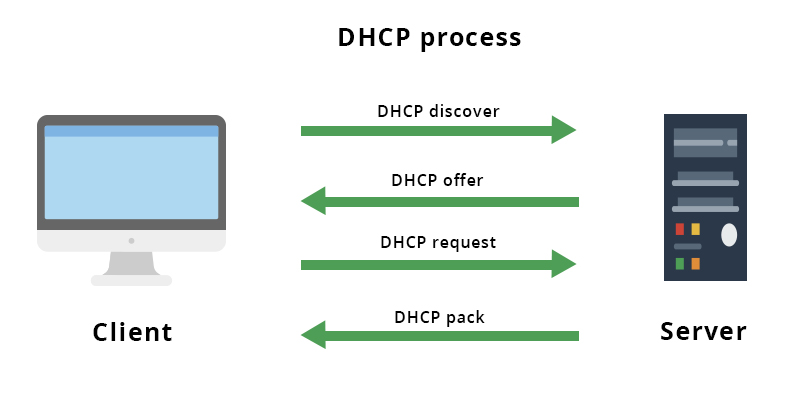
DHCP and Phases Involved in DHCP Operation
In the dynamic world of computer networking, configuring IP addresses and network parameters for each device can be a daunting task. Thankfully, the Dynamic Host Configuration Protocol (DHCP) comes to the rescue. DHCP serves as a powerful automation tool, streamlining the process of IP address assignment and network parameter configuration. In this article, we will explore the role of DHCP and delve into the various phases involved in its operation.
Understanding DHCP:
The Dynamic Host Configuration Protocol (DHCP) is a network protocol used to automatically assign IP addresses and other network parameters to devices within a network. With DHCP, network administrators can effortlessly manage a large number of devices, making it an indispensable tool in modern computer networks.
What is DHCP Used For?
Automatic IP Address Assignment: One of the primary purposes of DHCP is to automatically assign IP addresses to devices connected to the network. This eliminates the need for manual IP address configuration, reducing human errors and administrative overhead.
Network Parameter Configuration: DHCP not only assigns IP addresses but also configures other network parameters like subnet masks, default gateways, and DNS server addresses. This ensures that devices have the correct settings to communicate effectively within the network and beyond.
IP Address Lease Management: DHCP offers IP address leasing, allowing devices to use an IP address for a specific period. This dynamic leasing ensures efficient use of IP address space and helps avoid IP address conflicts.
Phases Involved in DHCP Operation:
The DHCP operation consists of four key phases, each playing a distinct role in the process of IP address assignment and configuration:
- DHCP Discovery Phase: When a new device connects to the network and needs an IP address, it initiates the DHCP discovery process. The device broadcasts a DHCPDISCOVER message, requesting an IP address from any available DHCP server within the network.
- DHCP Offer Phase: Upon receiving the DHCPDISCOVER message, the DHCP server responds with a DHCPOFFER message. This message contains an available IP address along with other network parameters that the server is willing to lease to the requesting device.
- DHCP Request Phase: Having received one or more DHCPOFFER messages, the device selects one of the offered IP addresses and sends a DHCPREQUEST message back to the DHCP server. The DHCPREQUEST message confirms the device’s intention to use the offered IP address.
- DHCP Acknowledgment Phase: Upon receiving the DHCPREQUEST message, the DHCP server acknowledges the IP address assignment by sending a DHCPACK message to the device. This message contains the confirmed IP address and other network parameters, finalizing the IP address assignment process.
Conclusion:
The Dynamic Host Configuration Protocol (DHCP) is a fundamental protocol in computer networking, simplifying IP address assignment and network parameter configuration. Its automatic and dynamic approach empowers network administrators to manage large networks efficiently, reducing manual configuration efforts and minimizing the risk of errors. By automating the IP address allocation process, DHCP ensures seamless connectivity and empowers the modern world of computer networks to thrive and expand.